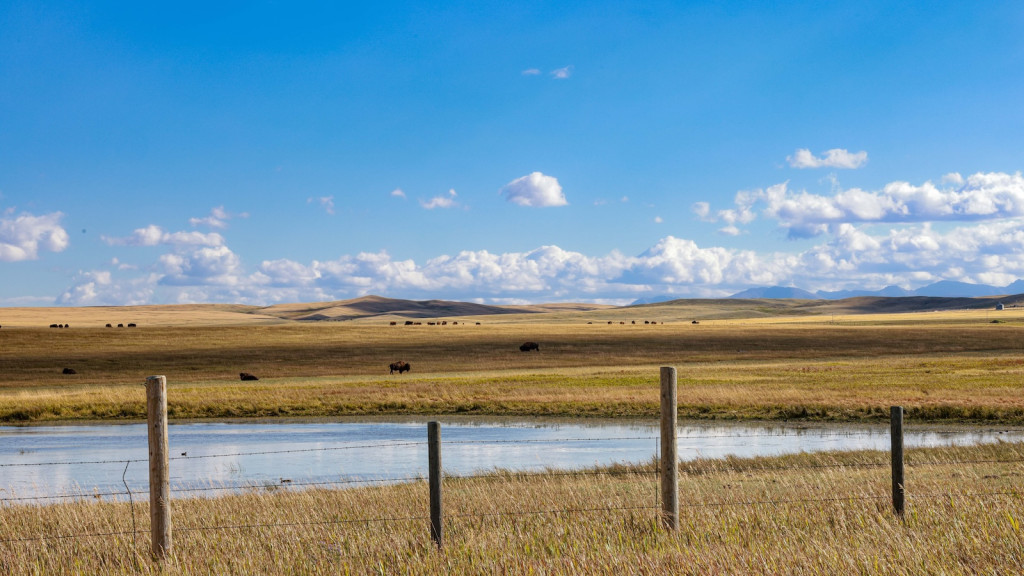
Land was once set aside as Native American reservations because it was undesirable and low in resources, but now interested Native Americans may have economic leverage in the growing industry of clean energy. A team of researchers led by UW–Madison professors Dominic Parker and Sarah Johnston quantified the economic potential of wind and solar energy projects on these lands and discussed the regulatory barriers for tribes wishing to tap into it.
“This is the first comprehensive analysis of the potential income that renewable energy projects could provide and an outline of the regulatory barriers facing tribes wanting to pursue them,” says Parker, a professor of agricultural and applied economics. “However, we emphasize that this is not a call to impose federal energy priorities on unwilling tribes.”
The study, recently published in Nature Energy, found that reservation lands are 46% less likely to host wind farms and 110% less likely to host solar farms than otherwise similar adjacent lands. Adding to this striking overall disparity, wind and solar resources are especially abundant in the poorest 25% of reservations. Most of these are located in remote areas where income opportunities from casinos and nearby urban labor markets are lacking.
The researchers used a statistical model to quantify the disparity between on- vs. off-reservation land for wind and solar farms installed by 2022. The team combined those results with energy demand forecasts through 2050 to predict the income that tribes would leave on the table if the current disparity persists until then.
In a scenario of high electrification and future reliance on renewables to meet energy demand, tribes would forego over $19 billion in lease and tax earnings by 2050, or $11.6 billion for a low-electrification scenario. The equivalent estimate for casino earnings through 2050 is $67 billion.
The researchers identified multiple barriers to development that help explain the disparity between clean energy projects on- and off-reservation land. One of the biggest is the complexity and uncertainty of the permitting process—for building both the facilities and the transmission lines that feed the generated energy into the power grid.
“An earlier study found that 49 regulatory steps were required to develop oil on reservations compared to four steps for off-reservation projects,” says Parker. “This regulatory jumble makes energy projects almost as uncommon as where they are forbidden, such as in public parks, forests and wildlife refuges.”
Launching a project on any privately owned land starts with obtaining leasing agreements, which generate income for landowners. For utility-scale wind farms, which are more spatially expansive than solar farms, this usually requires multiple landowners to sign off on leases. Because of historical land allotment policies, reservation land has more extensive ownership partitioning than non-reservation land, with an average of 14 owners for a 160-acre parcel.
This means developers planning to build a wind farm, which requires at least 5,000 contiguous acres, on 32 such parcels need to obtain the agreement of 448 owners to lease their land. That makes it very difficult for Native Americans on reservations—the poorest minority group in the United States—to pursue renewable energy projects while wealthier people elsewhere have been benefitting from federal and state subsidies, notes Parker.
Energy sovereignty—allowing tribes to implement their own goals without regulatory steps imposed by federal and state jurisdiction—would help reduce barriers for development, according to the authors. This sovereignty would enable tribes to exercise their right to use or not use the natural resources on their land. It could also prevent a repeat of historical mistakes like efforts to build hydroelectric dams on tribal land in the mid-20th century. Some of these dams were built without tribal consent, harming salmon runs and causing flooding.
“Rolling back the red tape will be critical so that tribes interested in development can realize the economic potential of their own resources,” says Parker. “The key is to avoid green colonialism by not pressuring uninterested tribes while at the same time making it feasible for those wanting the income.”

